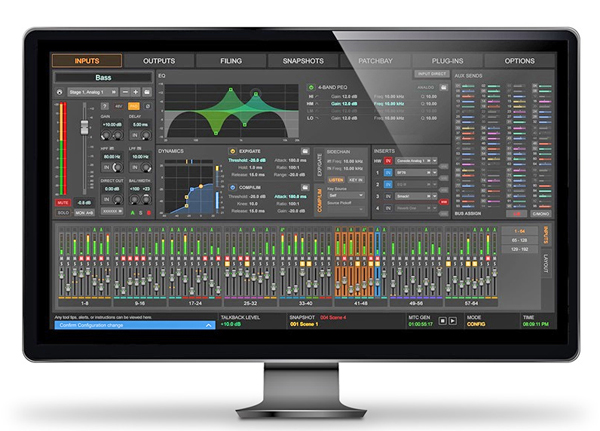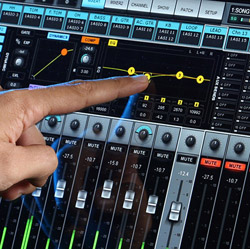A console that has a computer for a brain, rather than being limited to hard-wired analog paths, offers many advantages.
Easily one of the most significant is that new features and capabilities can be easily (and at low to no cost) added via software updates. This provides much better return on investment to those who purchase the gear while also making life easier on the mix and tech side of the equation.
The software-based approach also means that firmware upgrades can be implemented to fix glitches that only reveled themselves after the product was released to the public. This is great because it means that, in most cases, the console doesn’t need to be shipped back to the manufacturer (or to a service center) to get problems sorted out; rather, users just download the latest upgrade or patch, implement it, and then get right back to work.
Yet another advantage is additional flexibility. Users are provided with alternative methods of control for their mixes and related factors like automation. They can use a console’s physical controls, a combination of those controls and touch screen interfaces, or increasingly, the touch screen almost exclusively.
Of course, this extends even further to external tablets and smartphones serving key roles in the mix process, even “delegating” some mixing to individual users (i.e., musicians doing their own monitor mixes).
The listing of capabilities could go on and on, but you get the idea. So let’s take a look at recent software updates from the digital console world in terms of the new capabilities and features they provide.
One of the niftiest aspects of the new Allen & Heath dLive platform is the DEEP processing architecture that embeds plugins directly within the input and mix channels. An array of plugins, including graphic and EQs as well as compressors (and multiband compressors) can be inserted on the fly, without taking up FX slots or requiring external plugins.

In addition, dLive offers the RackExtra FX portfolio of “boutique” plugins that are conveniently already onboard, eliminating any latency concerns. This integrated library provides a host of reverb, delay and modulator algorithms, with 16 FX slots available, each with a dedicated stereo return.
At the other end of the spectrum, the newest member of the A&H Qu Series of digital mixers, the Qu-DB, is a surface-less freestanding or rack-mount unit that takes the form of a stage box, with all control parameters are provided via the Qu-Pad iOS tablet app.
DiGiCo recently announced Stealth Core2, an upgrade to its proprietary Stealth Digital Processing, that’s available as an option to all existing SD consoles. It provides additional processing from the audio core as well as features that include a new look application code to provide a new screen graphical interface.
In addition, full dynamic EQ will now be available on every channel and bus, and it also provides an increase in the number of channel strips, multi-band dynamic options, DiGiTuBes, and FX units. For example, the SD9 channel count goes from 48 to 96 channels of processing at 96 kHz and the SD7’s total number of processing strips increase to 600 (also at 96 kHz).
The subsequent Stealth Core2 upgrade announced for the compact SD11 and SD11i models takes the SD11i’s channel strips from 40 to 80 and doubles the output buses to 24, plus master and 8 x 8 matrix. It also increases the six DigiTuBes to 114, the six dynamic EQs to 114, and the multiband dynamic options from six to 114. And, the number of digital FX rises from six to eight units.
At the recent Prolight + Sound show in Frankfurt, Avid announced new VENUE 5.1 software that delivers enhanced capabilities for VENUE | S6L mix systems. Version 5.1 now supports two AVB-192 Ethernet AVB network cards, which enables users to expand their S6L systems to support up to 192 remote mic-preamps and 96 outputs using three fully loaded Stage 64 I/O racks.
Also, the new Spill Mode allows users to quickly spill any aux, group, or VCA members onto the surface faders for immediate access to these channels.

The new upgrade also offers enhanced visual feedback of parameters and states on the high-resolution OLED displays for faster navigation and mixing and improved VENUE show file compatibility with other VENUE systems.
It should be noted as well that the VENUE | S6L is a highly integrated platform, supporting Avid and third-party 64-bit AAX plugins. It also fits within the Avid MediaCentral Platform, an end-to-end media management and distribution platform, with one highlight being seamless integration with Pro Tools recording and playback capabilities.















